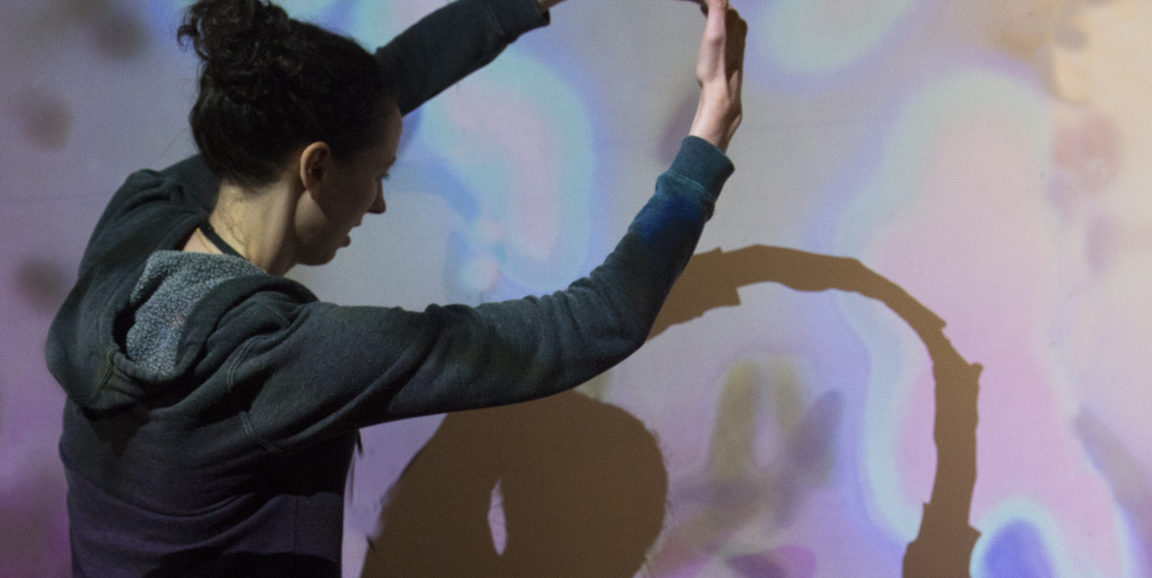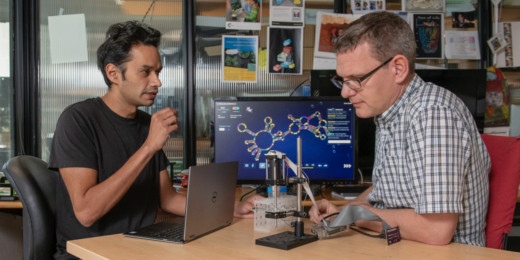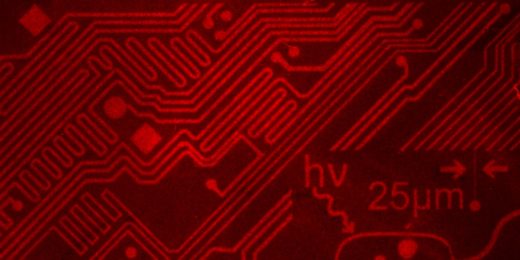Up on the screen in the galleries of the Exploratorium in San Francisco, single-celled organisms, called Euglena, wriggled and spun in magnified form. As visitors walked by, motion-capture technology reproduced their silhouettes in the Euglena's habitat. The cells responded by moving away from these humanoid blobs, due to the fact that the silhouettes were depicted in bright blue light that Euglena avoids.
This immersive experience - envisioned as "dancing with microbes" - was one of three exhibits that researchers at Stanford University and the Exploratorium designed, tested and compared for a study published today in Nature Biotechnology. The second exhibit was another take on virtual interaction: it allowed visitors to draw images - in that same bright blue light - on a touchscreen to see how Euglena reacted. The third was a traditional microscope-based observational experience.
In a Stanford News story, authors of the study explain why they embarked on the research:
We wanted these exhibits to open people up to a new way of thinking about interacting with different organisms, and we wanted to better understand what visitors take away from these experiences," said Amy Lam, a postdoctoral fellow in bioengineering at Stanford and lead author of the paper. "If people interact with the microbes in different ways, do they feel differently towards the exhibit? Are they more engaged and interested in the biology and the underlying technology?
In their study, the researchers found that the dancing and drawing exhibits were more popular with children than with adults; and overall, visitors spent twice as much time at the drawing exhibit than either of the other two. Only the traditional exhibit caused a decline in peoples' interest in Euglena, the researchers found; and all three led at least one visitor to express emotional concern for the cells.
The dancing exhibit also elicited a unique response from some people: they said they felt like they'd entered the microbial world.
"Thinking back to the level of immersion we achieved, the notion that humans and microscopic organisms can meet and interact with each other in their respective worlds is an important philosophical point that stuck with me," said Ingmar Riedel-Kruse, who led the work while he was an assistant professor of bioengineering at Stanford.
Looking forward, the researchers hope this work inspires other scientists, artists and engineers to contribute to the world of biotechnology-inspired life science exhibits and educational technologies.
Starting tomorrow, the drawing exhibit will return to the Exploratorium as part of the Cells to Self collection. With that, a new group of visitors will have the opportunity to introduce their finger-paintings to an audience of Euglena.
Photo courtesy of the Exploratorium of an Exploratorium exhibit that encouraged people to "dance" with the single-cell organism Euglena.






